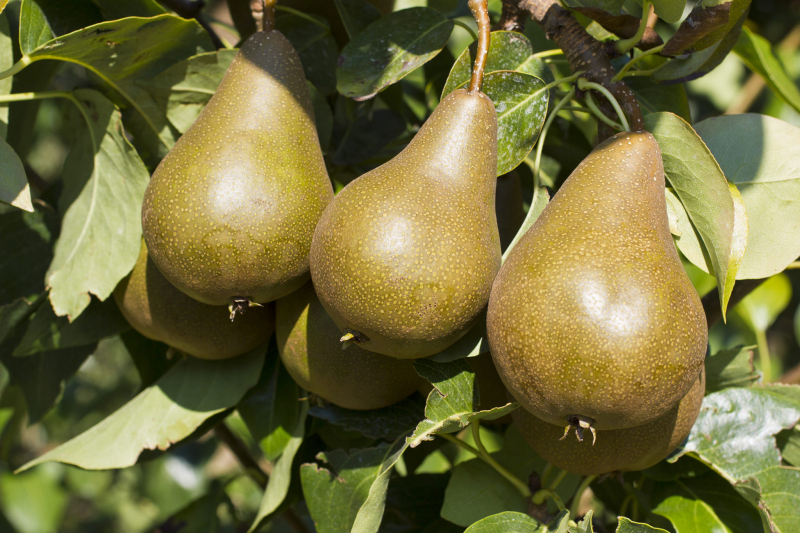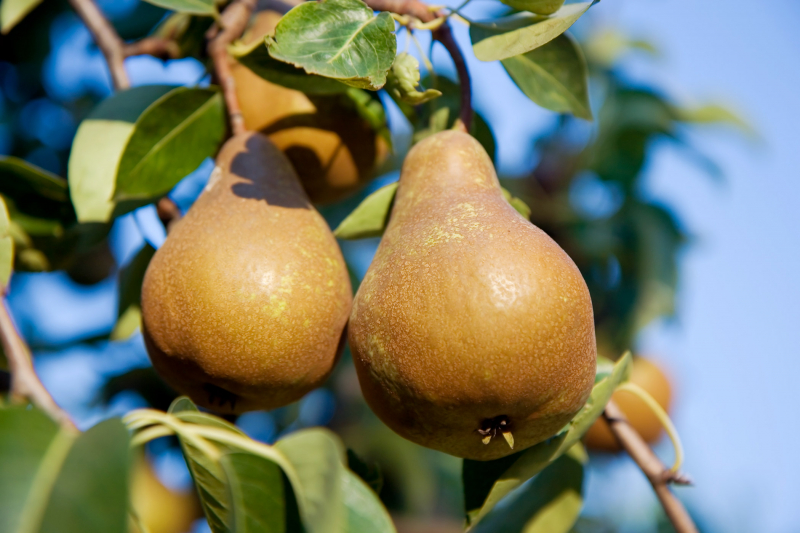Bosc pear

For a variety of reasons, Bosc pears stand out in a crowd. Their long, curving stem and graceful extended neck that gradually spreads to a full rounded base provide a distinct silhouette among pears. Bosc is also distinguished by its hue, which is a warm cinnamon brown with russeting on the skin's surface. Bosc has a natural russeting look. The russeting may cover the full surface of the pear or only a small area of the skin. The quality of the fruit is unaffected in either circumstance. Because of the natural beauty it provides, many artists utilize the russeted Bosc pear in their paintings, sketches, and photographs.
Bosc pears are a popular cultivar that can be purchased in most grocery shops during their season. Beginning in late September, look for them in the produce department. They are frequently part of a big display of several distinct types during the fall and winter months. Bosc pears are harvested in the fall in Oregon and Washington, and they are available from late September through April.
Bosc pears have firmer, denser flesh than other pear kinds, making them suitable for baking, broiling, or poaching. They keep their form and texture better than other types, and their flavor is less prone to be overpowered by strong spices such as cinnamon, clove, or nutmeg. Of course, they're also great for fresh eating, especially if you enjoy a firm texture.











